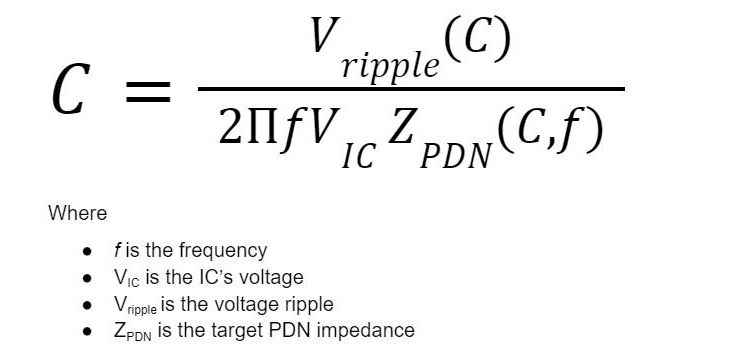Understanding The Great Decoupling: A Comprehensive Guide

Table of Contents
Defining the Great Decoupling
The Great Decoupling refers to the ambitious goal of achieving economic growth while simultaneously reducing or even eliminating environmental degradation. It signifies a fundamental shift away from the traditional model where economic expansion invariably leads to increased pollution and resource depletion. Understanding this concept requires clarifying the distinction between two key types of decoupling:
Absolute Decoupling vs. Relative Decoupling
-
Absolute Decoupling: This ideal scenario involves a decrease in environmental impact (e.g., greenhouse gas emissions, resource consumption) despite an increase in economic activity (e.g., GDP growth). This represents a true separation of economic growth from environmental harm. Imagine a scenario where a country's GDP increases by 5% while its carbon emissions decrease by 2%. That's absolute decoupling in action.
-
Relative Decoupling: This represents a more moderate form of decoupling where the rate of increase in environmental impact is slower than the rate of economic growth. While environmental impact still rises, it does so at a less damaging pace. For instance, a country's GDP might grow by 8%, but its carbon emissions only increase by 3%. This is still progress, but it doesn't fully address the environmental concerns.
Examples of relative decoupling can be seen in some developed nations where improvements in energy efficiency and technological advancements have slowed the increase in emissions, even with continued economic growth. However, true absolute decoupling across all environmental indicators remains a significant challenge.
Evidence and Case Studies of the Great Decoupling
While achieving complete absolute decoupling globally remains a distant prospect, several case studies illustrate progress toward this goal. These successful initiatives offer valuable insights into the strategies and policies required for more widespread decoupling:
Successful Decoupling Initiatives
-
Case Study 1: Denmark's Renewable Energy Transition: Denmark has made significant strides in decoupling economic growth from its reliance on fossil fuels. Through substantial investments in wind energy, coupled with supportive government policies and public acceptance, Denmark has significantly reduced its carbon footprint while maintaining a robust economy. Their success is evident in the substantial increase in renewable energy's share of electricity generation, coupled with sustained economic growth.
-
Case Study 2: Germany's Circular Economy Initiatives: Germany's focus on resource efficiency and a circular economy approach has yielded positive results. Implementing robust recycling programs and promoting the reuse of materials has lessened the strain on natural resources, demonstrating a form of relative decoupling in resource consumption. While challenges remain, the country’s proactive waste management and product lifecycle management strategies showcase progress towards a more sustainable economic model.
These examples demonstrate that decoupling is achievable, although challenges persist, including fluctuating energy prices and technological limitations in certain sectors.
Challenges and Barriers to Achieving the Great Decoupling
Despite encouraging examples, significant hurdles hinder widespread Great Decoupling. Overcoming these barriers requires a multi-faceted approach combining technological innovation, policy changes, and international collaboration.
Technological Limitations
- Lack of cost-effective and readily available green technologies in all sectors, particularly in heavy industry.
- The need for further research and development in sustainable materials and production processes.
Economic and Political Barriers
- High upfront costs associated with transitioning to sustainable technologies can deter businesses and governments.
- Inconsistent and fragmented environmental policies across regions create difficulties in implementing effective strategies.
- Global economic inequalities, particularly the carbon debt owed by developed countries to developing nations, exacerbate the challenges.
Addressing these economic and political barriers requires robust international cooperation, substantial investment in green technologies, and supportive policy frameworks.
Strategies for Promoting the Great Decoupling
Achieving the Great Decoupling demands a concerted effort from governments, businesses, and individuals. Several key strategies can facilitate this transition:
Policy Interventions
- Implementing carbon pricing mechanisms, such as carbon taxes or cap-and-trade systems, to incentivize emissions reductions.
- Investing in research and development of green technologies to make them more affordable and accessible.
- Strengthening environmental regulations and enforcing stricter standards for industrial emissions and waste management.
Technological Advancements
- Accelerating the development and deployment of renewable energy technologies, such as solar, wind, and geothermal.
- Promoting innovation in energy efficiency and resource management to reduce waste and consumption.
Behavioral Changes
- Raising public awareness about the importance of sustainable consumption and production patterns.
- Encouraging individuals to adopt eco-friendly lifestyles, including reducing their carbon footprint through conscious choices.
- Incentivizing businesses to adopt sustainable practices and invest in green technologies.
Conclusion
Understanding the Great Decoupling is crucial for shaping a sustainable future. While complete absolute decoupling remains a significant challenge, relative decoupling is achievable and provides a vital stepping stone towards the ultimate goal. The case studies highlighted above demonstrate that progress is possible through targeted policy interventions, technological innovation, and a shift towards sustainable consumption patterns. Overcoming the challenges requires a collaborative effort involving governments, businesses, and individuals. By understanding the complexities of achieving the Great Decoupling and actively engaging in sustainable practices, we can move closer to a future where economic growth and environmental protection coexist. We urge you to learn more about the intricacies of achieving the Great Decoupling and to explore ways to contribute to its success – whether through supporting sustainable businesses, advocating for effective environmental policies, or adopting sustainable practices in your own life. Let's collectively work towards promoting Great Decoupling and securing a healthier planet for future generations.

Featured Posts
-
 Andor Season 2 Trailer Release Date News And Updates
May 08, 2025
Andor Season 2 Trailer Release Date News And Updates
May 08, 2025 -
 110 Potential Return Billionaire Investors Are Betting Big On This Black Rock Etf
May 08, 2025
110 Potential Return Billionaire Investors Are Betting Big On This Black Rock Etf
May 08, 2025 -
 Daily Lotto Friday 18th April 2025 Results
May 08, 2025
Daily Lotto Friday 18th April 2025 Results
May 08, 2025 -
 Nuggets Rest Jokic And Starting Lineup Sit Out Following Tough Defeat
May 08, 2025
Nuggets Rest Jokic And Starting Lineup Sit Out Following Tough Defeat
May 08, 2025 -
 Analysis Trump Media Crypto Com Etf Collaboration And The Cro Surge
May 08, 2025
Analysis Trump Media Crypto Com Etf Collaboration And The Cro Surge
May 08, 2025
Latest Posts
-
 Star Wars Andor A Look At Tony Gilroys Creative Vision
May 08, 2025
Star Wars Andor A Look At Tony Gilroys Creative Vision
May 08, 2025 -
 Tony Gilroys Positive Andor Experience A Star Wars Success Story
May 08, 2025
Tony Gilroys Positive Andor Experience A Star Wars Success Story
May 08, 2025 -
 Andor Showrunner Tony Gilroy Reflects On Production
May 08, 2025
Andor Showrunner Tony Gilroy Reflects On Production
May 08, 2025 -
 Andor Season 2 Your Pre Viewing Guide
May 08, 2025
Andor Season 2 Your Pre Viewing Guide
May 08, 2025 -
 Everything You Need To Know Before Andor Season 2 Airs
May 08, 2025
Everything You Need To Know Before Andor Season 2 Airs
May 08, 2025
